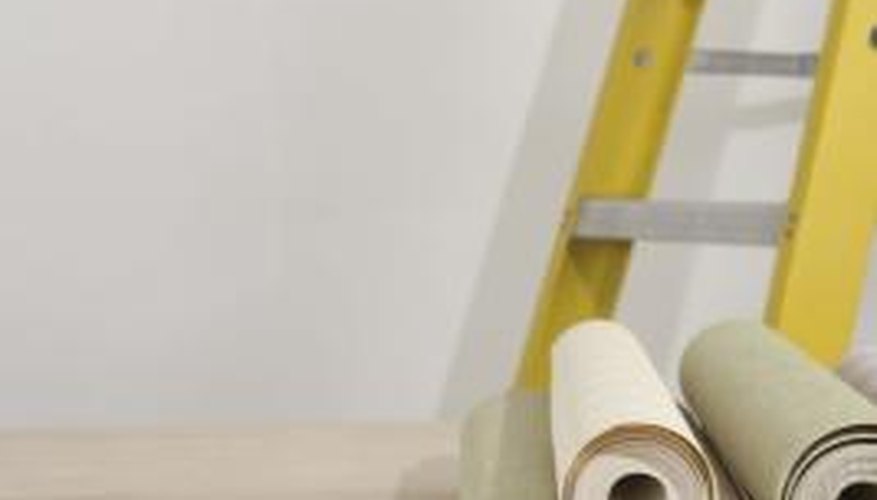Glossy paint is less porous than flat paint. The shine that makes it durable and washable also makes it a poor candidate for wallpaper adhesion. Fortunately, it's not a problem if you do a little advance preparation. Wallpaper sizing does the same thing as regular primer paint: it provides a more porous surface for adhesive to stick. Spackle, sand and prime any cracks or holes in the wall, and sand down any bumps or raised areas before wallpapering.
- Glossy paint is less porous than flat paint.
- The shine that makes it durable and washable also makes it a poor candidate for wallpaper adhesion.
Clear areas near the walls to be papered. Spread plastic tarpaulins over furniture, counters and floors.
Sand the walls with medium-grit sandpaper to rough up the glossy paint so adhesive can stick. Wipe grit away with a damp sponge and let dry.
Measure and cut pieces of wallpaper to fit in advance. Add 15 cm (6 inches) to the top and bottom of the measurement to allow for adjusting patterns and an occasional mistake.
Pour sizing into a paint tray, and apply a thin layer to the wall with a roller.
Change rollers and apply a thin layer of wallpaper adhesive to the back of a piece of wallpaper. Place the wallpaper on the wall and smooth it on straight. Between the adhesive and siding, it will slide easily if adjustments are necessary. Use a smoothing brush in long strokes to smooth out air bubbles trapped under the paper.
- Sand the walls with medium-grit sandpaper to rough up the glossy paint so adhesive can stick.
- Between the adhesive and siding, it will slide easily if adjustments are necessary.
Trim the excess from top and bottom of the installed wallpaper with a Stanley knife and metal straight edge. Continue installing each sheet of wallpaper until the room is finished.
TIP
Keep the damp sponge handy to clean up any drips of adhesive on the work surface. You don't want glue on the facing side of the wallpaper.
